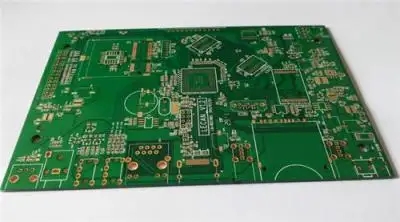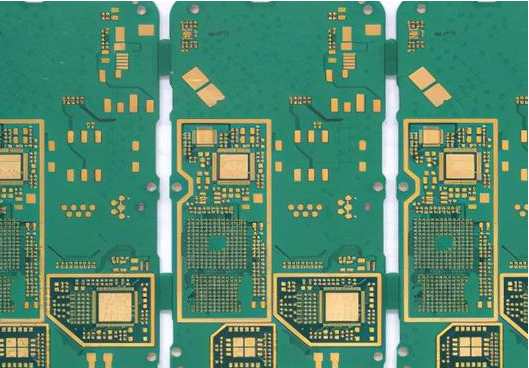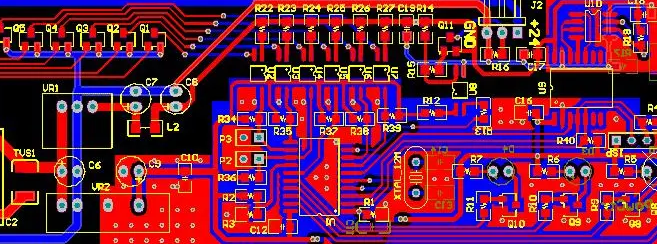
Basic Principles and Requirements of PCB Design
1. The design of the printed circuit board starts from the determination of the size of the board. Because the size of the printed circuit board is limited by the size of the chassis shell, it is appropriate to fit it into the shell. Secondly, the connection mode between the printed circuit board and external components (mainly potentiometers, sockets or other printed circuit boards) should be considered. The printed circuit board and external components are generally connected by plastic wires or metal isolation wires. But sometimes it is also designed as a socket. Namely, when installing a plug-in printed circuit board in the equipment, the contact position that acts as the socket shall be reserved. For larger components installed on the printed circuit board, metal accessories shall be added
1. The design of the printed circuit board starts from the determination of the size of the board. Because the size of the printed circuit board is limited by the size of the chassis shell, it is appropriate to fit it into the shell. Secondly, the connection mode between the printed circuit board and external components (mainly potentiometers, sockets or other printed circuit boards) should be considered. The printed circuit board and external components are generally connected by plastic wires or metal isolation wires. But sometimes it is also designed as a socket. Namely, when installing a plug-in printed circuit board in the equipment, the contact position that acts as the socket shall be reserved.
For larger components installed on the printed circuit board, metal accessories shall be added for fixation to improve vibration resistance. Impact resistance.
General PCB basic design process is as follows: preliminary preparation ->PCB structure design ->PCB layout ->wiring ->wiring optimization and silk screen ->network and DRC inspection and structure inspection ->plate making.
First: Preliminary preparation. This includes preparing catalogs and schematics. Before PCB design, first prepare the component library of schematic SCH and PCB. You can use Peotel's own library for component library, but it is difficult to find a suitable one in general. It is better to make your own component library according to the standard size information of the selected components. In principle, the component library of PCB should be built first, and then the component library of SCH. PCB component library has high requirements, which directly affects the installation of boards; The component library requirements of SCH are relatively loose. Just pay attention to defining the pin attributes and the corresponding relationship with PCB components. PS: Note the hidden pins in the standard library. After that, it is the schematic design. After that, it is ready to start PCB design.
Second: PCB structure design. In this step, the PCB surface is drawn in the PCB design environment according to the determined PCB size and various mechanical positioning, and the required connectors, keys/switches, screw holes, assembly holes, etc. are placed according to the positioning requirements. And fully consider and determine the wiring area and non wiring area (such as how large the area around the screw hole belongs to the non wiring area).
Third: PCB layout. The layout is to put devices on the board. At this time, if all the preparations mentioned above are completed, you can generate the network list (Design ->Create Netlist) on the schematic diagram, and then import the network list (Design ->Load Nets) on the PCB diagram. The device is piled up in a crash, and there are flying wires between pins to prompt connection. Then you can lay out the device.
The general layout shall follow the following principles:
① According to the reasonable division of electrical performance, it is generally divided into: digital circuit area (i.e. fear of interference and generate interference), analog circuit area (fear of interference), power drive area (interference source);
② Circuits that complete the same function shall be placed as close as possible, and all components shall be adjusted to ensure the most concise connection; At the same time, adjust the relative position between the function blocks to make the connection between the function blocks the most concise;

③ For components with high quality, the installation position and strength shall be considered; The heating element shall be placed separately from the temperature sensing element, and thermal convection measures shall be considered when necessary;
④ The. I/O driver shall be close to the edge of the printed board and the outlet connector as far as possible;
⑤ The clock generator (such as crystal oscillator or clock oscillator) shall be as close as possible to the device using the clock;
⑥ A decoupling capacitor shall be added between the power input pin and the ground of each integrated circuit (generally, a monolithic capacitor with good high-frequency performance is used); When the circuit board space is dense, a tantalum capacitor can also be added around several integrated circuits.
⑦ Discharge diode shall be added at relay coil (1N4148 is enough);
⑧ The layout should be balanced, dense and orderly, not top heavy or heavy
——Special attention shall be paid to the actual size (area and height) of components and the relative position between components when placing components, so as to ensure the electrical performance of the circuit board and the feasibility and convenience of production and installation. At the same time, the placement of components shall be properly modified to make them neat and beautiful on the premise that the above principles can be reflected. Similar components shall be placed orderly and in the same direction, It should not be placed in an "orderly manner".
This step is related to the overall image of the board and the difficulty of wiring in the next step, so we should make great efforts to consider it. In the layout, preliminary wiring can be made for uncertain places, and full consideration can be given.
Fourth: wiring. Wiring is the most important process in PCB design. This will directly affect the performance of PCB. In the process of PCB design, there are generally three levels of wiring: first, routing, which is the most basic requirement for PCB design. If the lines are not connected and there are flying lines everywhere, it will be an unqualified board. It can be said that we haven't started yet. The second is the satisfaction of electrical performance. This is the standard to measure whether a printed circuit board is qualified. This is to carefully adjust the wiring after wiring to achieve the best electrical performance. Next is beauty. If your wiring is connected, there is no place that affects the performance of electrical appliances. But at a glance, it is chaotic, colorful and colorful. Even if your electrical performance is good, it is still a piece of garbage in the eyes of others. This brings great inconvenience to testing and maintenance. The wiring shall be neat and uniform, and shall not be crisscross and disorganized. All these should be achieved under the premise of ensuring the electrical performance and meeting other individual requirements, otherwise, it will be a waste of time.
The wiring shall be carried out according to the following principles:
① In general, the power line and ground wire shall be wired first to ensure the electrical performance of the circuit board. Within the allowable range, the width of power supply and ground wire shall be widened as much as possible. It is better to make the ground wire wider than the power line. Their relationship is: ground wire>power line>signal line. Generally, the width of signal line is 0.2~0.3mm, the thinnest width can reach 0.05~0.07mm, and the power line is generally 1.2~2.5mm. The PCB of digital circuit can be used to form a loop with a wide ground wire, that is, to form a ground grid for use (the ground of analog circuit cannot be used in this way)
② Wires with strict requirements (such as high-frequency lines) shall be wired in advance, and the side lines of input and output terminals shall not be adjacent and parallel to each other to avoid reflection interference. If necessary, ground wires shall be added for isolation, and the wiring of two adjacent layers shall be perpendicular to each other, which may cause parasitic coupling.
③ The oscillator shell shall be grounded, and the clock wire shall be as short as possible and shall not be led everywhere. The area of the ground under the clock oscillation circuit and special high-speed logic circuit should be added, and other signal lines should not be used to make the surrounding electric field approach zero;
④ The 45o polyline wiring shall be used as far as possible, and the 90o polyline shall not be used to reduce the radiation of high-frequency signals; (Double arc lines are also used for lines with high requirements)
⑤ Any signal line shall not form a loop. If it is unavoidable, the loop shall be as small as possible; The vias of signal lines shall be as few as possible;
⑥ The key lines shall be as short and thick as possible, and protective areas shall be added on both sides.
⑦ When transmitting sensitive signals and noise field band signals through flat cables, they should be led out in the way of "ground wire signal ground wire".
⑧ Test points shall be reserved for key signals to facilitate production, maintenance and detection
⑨ After the schematic wiring is completed, the wiring shall be optimized; At the same time, after the preliminary network inspection and DRC inspection are correct, fill the ground wire in the unrouted area, use a large area of copper layer as the ground wire, and connect the unused places with the ground on the printed board as the ground wire. Or it can be made into multilayer boards, with one layer for power supply and one layer for ground wire.
The above is just a summary of experienced people. The specific practical experience still needs you to explore in practice to further understand the principles and requirements of PCB wiring.







